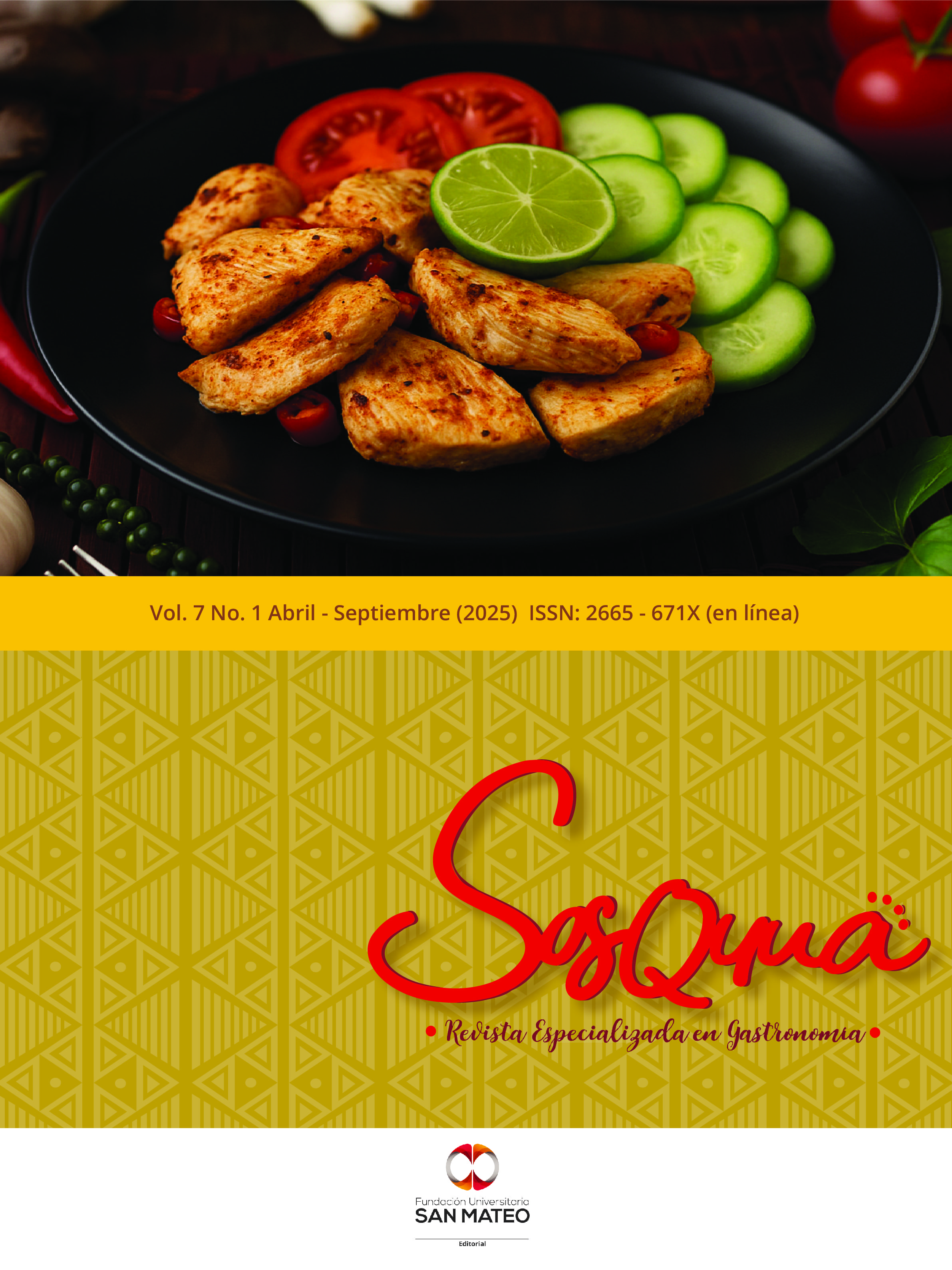Desarrollo y elaboración de chorizo parrillero a base de carne de tilapia una alternativa saludable y nutritiva
Main Article Content
Abstract
This study develops and evaluates a grilled sausage (chorizo parrillero) made from tilapia (Oreochromis niloticus) with the aim of offering a healthier and more nutritious alternative to traditional sausages. The tilapia production was in an aquaponics system, allowing for the full utilization of fish meat, which is typically discarded in processes focused on skin extraction for therapeutic purposes. The sausage evaluation was in three different formulations, varying in seasoning and fat content. Sample 3, which included onion powder and smoke essence, stood out for its superior sensory acceptance in terms of color, texture, aroma, and flavor. A theoretical nutritional analysis based on Bolivian food composition tables, complemented by a bromatological analysis, confirmed that tilapia sausage offers a high protein content (16.51%) and moderate fat content (13.34%), with a low carbohydrate contribution (5.74%). Furthermore, the results of the microbiological analysis indicated that the product complies with Bolivian food safety regulations, showing the absence of pathogenic microorganisms such as Salmonella spp., Escherichia coli, and Staphylococcus aureus. This ensures the safety of the sausage, as long as good manufacturing practices are maintained. The grilled tilapia sausage is presented as a viable and nutritious alternative in the sausage market, contributing to the diversification of aquaculture-based products in Bolivia and promoting the consumption of fish protein. This product combines an appealing sensory formulation with a healthy nutritional profile, aligning with current trends in balanced eating.
Downloads
Article Details

This work is licensed under a Creative Commons Attribution-NonCommercial-NoDerivatives 4.0 International License.
Sosquua. Revista Especializada en Gastronomía está comprometida con la preservación del medio ambiente, razón por la que se edita digitalmente a través de la plataforma de acceso abierto: Open Journal System –OJS; la cual permite consolidar una gestión editorial eficiente para cada fase y actor interviniente en el proceso de publicación.
- No genera a los autores pago alguno por gastos de procesamiento de artículos (APC), ni cargos por envío de artículos.
- Así mismo, la suscripción en línea es libre y gratuita.
Los autores de Sosquua. Revista Especialiazada en Gastronomía proporcionan la circulación de sus contenidos a la Fundación Universitaria San Mateo mediante licencia Creative Commons Atribución-NoComercial-SinDerivar 4.0 que permite a terceros compartir la obra siempre que se indique su autor y su primera publicación esta revista.

- Los usuarios pueden consultar el contenido de esta obra a través del sistema de repositorios internos y/o externos en donde la Fundación Universitaria San Mateo tiene o tenga presencia, en la página Web, así como en las redes de información del país y el exterior, con las cuales tenga convenio la institución.
- Se permite la consulta, reproducción parcial, total o cambio de formato con fines de conservación, a los usuarios interesados en el contenido de este trabajo, para todos los usos que tengan finalidad académica, siempre y cuando, mediante la correspondiente cita bibliográfica se le dé crédito a la obra y a su(s) autor(es).
Asi mismo, como autor (es) certifico(amos) que la obra cumple con las normas y requisitos exigidos por el Comité Editorial de la institución; así mismo se asume cualquier responsabilidad frente a la originalidad y tratamiento de la información presentada; excluyendo de cualquier perjuicio o percance a la Fundación Universitaria San Mateo.
References
Ayudiet. (s.f.). Tabla boliviana de composición química de los alimentos en Bolivia.
Baltazar, P. (2007). La Tilapia en el Perú: acuicultura, mercado, y perspectivas. Revista Peruana de Biología, 13(3), 267-273. http://www.scielo.org.pe/scielo.php?script=sci_arttext&pid=S1727-99332007000100022&lng=es&tlng=es
Camburn, M. (2011). El consumo de pescado en la Amazonía Boliviana. FAO.
CENAN. (2018). Tablas peruanas de composición de alimentos. Ministerio de Salud del Perú.
Cruz-Bacab, L., Baeza-Mendoza, L., Pérez-Robles, L. y Martínez-Molina, I. (2018). Evaluación sensorial de embutido tipo chorizo a base de carne de conejo. Abanico Veterinario, 8(1), 102-111.
Fitia. (s.f.). Pimienta. https://fitia.app/es/calorias-informacion-nutricional/pimienta-15884/
IBNORCA. (2022). Carnes y productos derivados - Requisitos microbiológicos (Tercera revisión) (Anula y reemplaza a la norma NB 310017:2014) (Norma núm. NB 310017:2017). https://www.ibnorca.org/normalizacion/ics/ics6712010
IBCE. (2017). Bajo consumo a pesar del potencial acuícola. https://ibce.org.bo/principales-noticias-bolivia/noticias-nacionales-detalle.php?id=77992&
Liñan, W. (2007). Crianza de Tilapia (1ª Ed.). Editorial MACRO.
Pulido, R. (2024). Pesca y acuicultura. FAO. https://www.fao.org/fishery/es/countrysector/bo/es
Serrano, J. (2011). Estandarización de un proceso de extracción de colágeno a partir de los residuos de fileteo de tilapia (Oreochromissp) y cachama (Piaractusbrachypomus) [Tesis de maestría, Universidad Nacional de Colombia]. Repositorio institucional UNAL. https://repositorio.unal.edu.co/handle/unal/8297
Somana, M. (2021). La Charcutería. Trayecto Comunicaciones.
Somerville, C., Cohen, M., Pantanella, E., Stankus, A. & Lovatelli, A. (2014). Small-scale Acuaponic Food Production Integrated Fish and Plant Farming. FAO.

